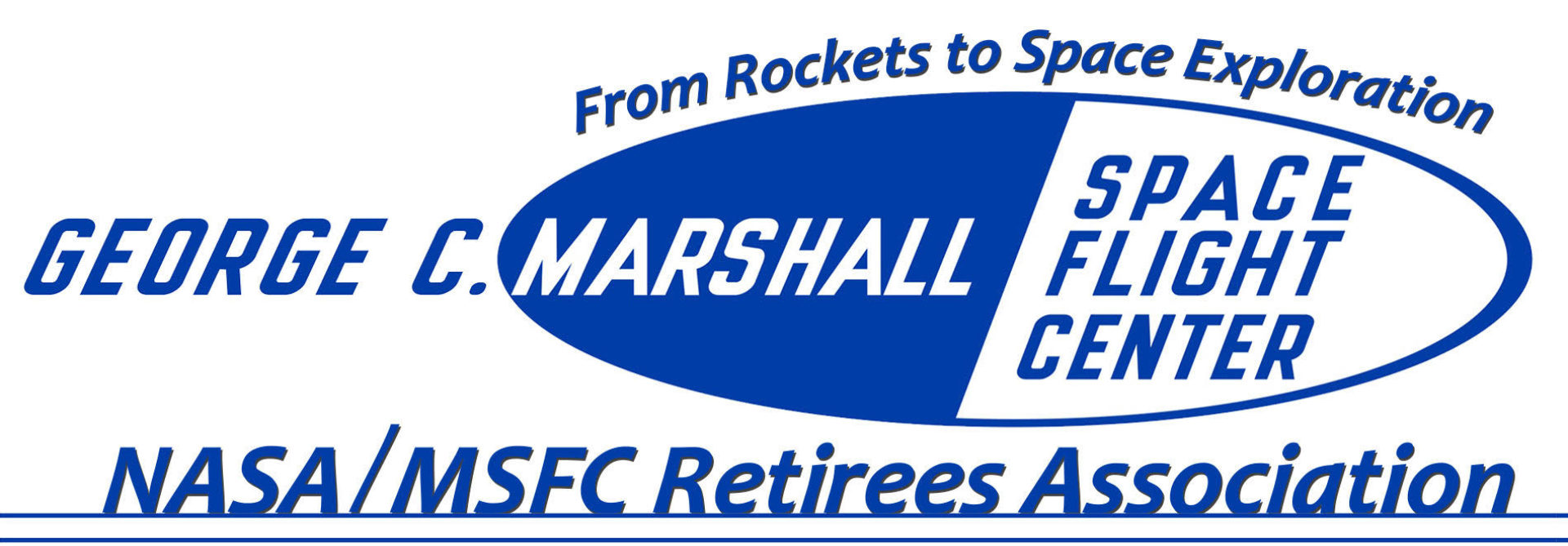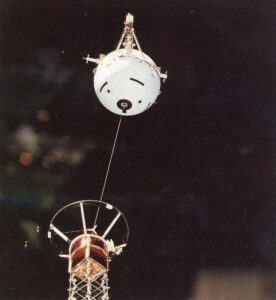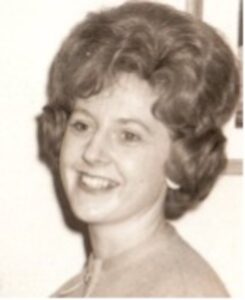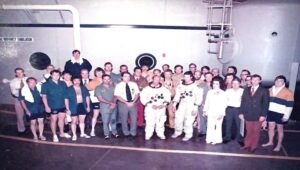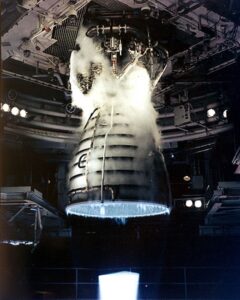This article is one of a set of “Recollections” Bill Snoddy wrote for his children and grandchildren.
As discussed in previous “recollections,” in early June of 1958 I reported to work as a summer employee in the Research Projects Office of the Army Ballistic Missile Agency. Under the leadership of Dr. Wehner von Braun the Agency, only four months before, had launched the U.S.’s first satellite, Explorer I. An attempt to launch Explorer II had failed and the satellite was lost in the Atlantic Ocean. Explorer III had been successfully launched in March, and Explorer IV was scheduled to be launched in late July.
With a brand new BS in physics, I was assigned the job of independently calculating the predicted temperatures of these early satellites. It seems that the temperatures of Explorer I and III were not behaving as expected and my boss, Gerhard Heller – one of the original German members of the “von Braun team” – wanted someone to redo from scratch the theoretical calculations.
These early satellites were placed into 90-minute orbits that were highly “inclined”, meaning that the orbit was tipped at an angle of about 55 degrees with the equator. The orbits were also elliptical with the highest point being well over 1,000 miles above the earth and the lowest being less than 200 miles. If you could see the orbit itself, it would look somewhat like one of the rings of Saturn. (And after all, these rings are made up of particles chasing each other in specific orbits around Saturn.) As I worked my way through the various equations, it became clear that one important factor in the average temperature of the satellite was the portion of the orbit that was in sunlight vs. the portion that was in the shadow of the earth. When the satellite was in the sunlight its temperature started going up and when it was in the shadow it started down. With the average being somewhere in between.
Now we start to get into some of the tricky parts – this orbit does not remain “fixed” in space but slowly rotates. This has to do with the fact that the earth isn’t a perfect sphere but (like many of us) is fatter in the middle at the equator. In any case, the satellite orbit is slowing, rotating at about 5 degrees a day – meaning that it would rotate a full 360 degrees in about 72 days. Now most of the time as seen by the sun, part of the orbit would be behind the earth – thus in the earth’s shadow. However, as the orbit slowly rotated around the earth it was occasionally possible for the high part of the orbit to peek up behind the earth so that for a few weeks every few months the entire orbit would be visible from the sun and thus in full sunlight.
This was very important because the rather simple thermal design of these first satellites required that the satellite pass through the earth’s shadow on each orbit for a period of cooling. Being in full sunlight for even a day would cause the temperature to rise to the point where the internal electronics would permanently fail. Since these first satellites were powered by batteries their lifetime was limited to a couple of months. It was thus critical that they be launched into an orbit that would not have one of these full sunlight conditions during their expected lifetime. In order to get the satellite into one of these desirable initial orbits it was necessary to control the launch time.
The launch pad at the Cape in Florida is moving (as are we) with the earth as it rotates daily. This is sort of the beginning point of the first orbit and so the location of the launch pad relative to the sun at the time of the launch determines the angle between the sun and the orbit. Think of it this way: if you launch at noon time, you are guaranteed that the “back” side of the orbit will be behind the earth thus in the earth’s shadow. Or if you launch at midnight, then you are assured that the first part of the orbit will be in the earth’s shadow. However, if you launch just at sunrise or sunset, the orbit will be “facing” the sun and there is the possibility that the sun will be able to see the entire orbit.
So the launch time was selected to assure that the orbit would pass though the earth’s shadow and it would not rotate to one of the 100% sunlight conditions until after the batteries had died and the mission was effectively over.
In looking over the predictions for the amount of time to be spent in the earth’s shadow on each orbit for the upcoming Explorer IV, I was struck by the abrupt changes that would supposedly occur in rather short times of only a few hours. It just didn’t seem to make sense. Working with me in the same group that summer was Bob Naumann who a few years earlier had also graduated in Physics at the University of Alabama and was working part time on his PhD. (Bob and I and 5 others were sharing a lodge in Monte Santo Park that summer – see another “Recollection”).
I pointed out to Bob the fact that I simply couldn’t understand how the shadow times could be changing in such a strange manner. The calculations had been made by another group and so we had no convenient way of checking their equations. However, Bob suggested that we simply make ourselves a little model and see if it agrees with the calculations. This we did using a standard globe earth and cutting a model of the orbit out of cardboard and placing it around the globe. See photo below (the big sheet with the hole in it represents the plane of the earth’s equator).

That’s me on the right (remember I was only 20), Bob next to me, Mr. Heller next to Bob and Don Cochran (another member of the group) on the left.
Bob and I then simply set the orbit up as it would be for a particular launch time and then slowly rotated it to simulate the 5 degree rotation it would have each day. One of us would pretend he was the sun and would stand as far back as we could get and see how much of the orbit we could see. The part we couldn’t see would represent the part that would be in the earth’s shadow. Sure enough the numbers we came up with did not agree with the calculations. Turns out the calculations were wrong. This created a bit of a panic because the time of the upcoming launch had been based on these incorrect calculations.
Matters then became even more interesting because our boss, Mr. Heller, was on vacation hiking in the Smokies. Efforts to locate him were unsuccessful. Something had to be done and before we knew it, Bob and I found ourselves in a meeting with Dr. von Braun’s Deputy, Dr. Eberhard Rees. Bob and I explained to Dr. Rees our findings and he gave us the job of coming up with the correct launch time for the Explorer IV launch.
We went back to our office and very carefully redid our modeling and came up with a launch “window” of about 3 hours that would work. That is, if the launch occurred any time during those three hours, the orbit of the satellite would not see full sun during the 2-3 month battery life time of the satellite.
We were very nervous about being given this responsibility because if the satellite did see the sun 100% of the time, the temperature would indeed rise to the point where the electronics would be destroyed. To make matters even more dramatic, there was more riding on this launch than I realized. We were in a cold war with Russia. Things between the two countries were tense. People had fallout shelters.
It was known that worldwide radio communications were possible because of the ionosphere surrounding the earth. Radio waves travel in straight lines unless reflected by something. The ionosphere (a layer of charged particles approximately 100 miles above the earth) served as the reflector bouncing the radio waves from one side of the world to the other. There was apparently a major concern that if an atomic bomb were exploded in the ionosphere it would temporarily disrupt the ionosphere, causing a loss of worldwide communications. I assume it was feared that this might be done by the Russians as part of an attack on the U.S. In order to find out if this could really happen, it was planned to secretly explode an atomic warhead high above the earth and to use Explorer IV to directly measure what this would do to the ionosphere.
Therefore, it was militarily significant that Explorer IV be successful. I didn’t know about this since I only had “secret” clearance and it took “top secret” clearance and a “need to know” to know about these planned atomic explosions (turns out there were three during Explorer IV’s lifetime). Bob did have the right clearance and did know what was planned and thus was especially motivated to make darn sure we had the correct launch time for the satellite.
So we set out to verify our little model with computer computations of our own. Bob worked up a simplified set of equations which we programmed into our office’s brand new Burroughs E101 Computer. This desk size computer was the first one that our office had ever had and was limited to a mathematical formula requiring no more than about a dozen calculations. Unfortunately our formulas had more than that. There was no time to find a more capable computer and so we personally became part of the process. Three of us (Bob, me, and Mary Jo Smith – another summer employee) each took on a role in the calculations. I believe I was the square root routine, Bob was the sine and cosine routine, and Mary Jo was the arcsine and arccosine routine. The computer would start grinding away and when it needed a square root, for example, it would give me the number and stop; I would look up the square root in a book of tables and type in the correct number and then the computer would start up again. Same for the sines and cosines, etc.
By working literally day and night for several days we were able to confirm that indeed the new launch times as determined by our little globe were correct.
Then it came time for the launch scheduled for mid-July. The launch date was classified secret but all of us young folks in the office had secret clearance, knew when the launch was scheduled, and decided we wanted to go see it. We didn’t have any vacation leave — only a day or two of accumulated sick leave. I don’t think it surprised the office when eight of us were suddenly sick for two days at the same time. We left Huntsville very early one morning and drove straight through to the Cape in two cars. By the time we got there it was late evening and the launch had been scheduled (remember we had set the time) for a three-hour period starting about 2:00 in the morning. We checked into a couple of motel rooms and tried to get an hour or two of sleep. At midnight we headed over to the public beach where we had a pretty good view of the rocket as it sat on the launch pad across the water from us. And nothing happened. And we waited. And still nothing happened. We wanted someone to go and make a phone call to see if we could find out what was going on. A bit tricky since the whole thing was classified secret. But nobody wanted to go to the phone because they were afraid they would miss the launch.
Finally after the last time for launching had passed, we did find a phone and were told we might as well come home. Apparently the launch had been postponed and we didn’t even know it. The launch did occur a few days later and the satellite performed beautifully. On August 27 the first atomic warhead was exploded in space and two more within the next few days. Although I was involved in gathering the temperature and radiation data from Explorer IV as these blasts occurred, I didn’t officially know what was going on. Although it didn’t take much to make an educated guess.
Our photograph was published in the ABMA newspaper in connection with our use of a model globe to establish the launch time of Explorer IV (see photo above). All in all, a rather exciting summer for a new graduate. I was scheduled to start graduate school that fall, but at the end of the summer I was offered a permanent job (with the possibility of doing graduate work in the evening). It probably comes as no surprise that I accepted the offer.
